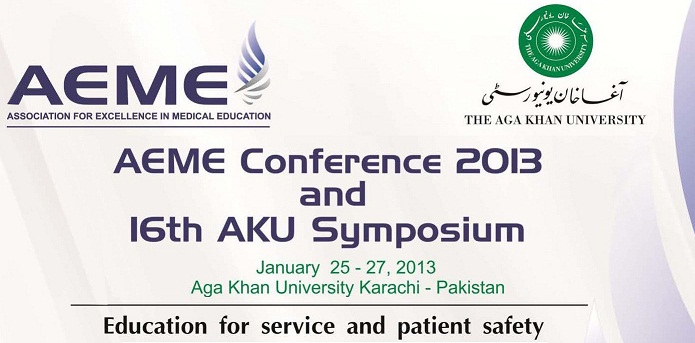Day 1 : Oral Presentations (Theme: Learning Environment)
Attrition in surgical residency --- the real face of a hidden problem
Location
Lecture Hall 3
Start Date
26-1-2013 3:45 PM
Abstract
Background: Attrition in surgical residency is of continued concern for surgical educators globally. It results in loss of morale and resources and often leaves the program scrambling to find replacement residents. Rationale of Study: There is increase in residents’ attrition over the years but due to paucity of data, the actual magnitude and factors associated with it are unclear.
Objectives: (i) To determine the rate and trend of attrition at our institute;(ii) To identify the reason/s for attrition;(iii) To correlate perspective of residents and program directors (PD).
Design, setting and participants: A questionnaire based survey conducted at university hospital. Separate questionnaires were designed for residents and PD. The residents who left voluntarily from one of the five surgical residency program i.e., General surgery, Orthopedics, neurosurgery, ENT or Urology during academic year 2005 to 2011 were identified from department database. The residents who did not respond after three attempts or those who refuse to participate were excluded.
Results: During last six years total of 106 residents were recruited. 84 (78%) were male, of them 34.5% left the program voluntarily. Of 22% females, 54% left the program voluntarily but this gender related attrition was not statistically significant (p=0.07). The overall 6 years attrition rate is 39%. The reasons identified for attrition in descending order are personal, attitude of senior residents or faculty and change of specialty. None of the resident left due to work load. Approximately 40% rejoined same specialty after leaving while 35% chose different specialty (80% surgical subspecialty and 20% medicine). There is significant discrepancy in residents and PDs perspective.
Conclusion: Although attrition in surgical residency is not unique to our program but the recent rise in attrition is a major concern. It is the responsibility of training institutes to analyze the important issue, to optimize the career paths of the residents, and to assure the continued maturation of trainees.
Attrition in surgical residency --- the real face of a hidden problem
Lecture Hall 3
Background: Attrition in surgical residency is of continued concern for surgical educators globally. It results in loss of morale and resources and often leaves the program scrambling to find replacement residents. Rationale of Study: There is increase in residents’ attrition over the years but due to paucity of data, the actual magnitude and factors associated with it are unclear.
Objectives: (i) To determine the rate and trend of attrition at our institute;(ii) To identify the reason/s for attrition;(iii) To correlate perspective of residents and program directors (PD).
Design, setting and participants: A questionnaire based survey conducted at university hospital. Separate questionnaires were designed for residents and PD. The residents who left voluntarily from one of the five surgical residency program i.e., General surgery, Orthopedics, neurosurgery, ENT or Urology during academic year 2005 to 2011 were identified from department database. The residents who did not respond after three attempts or those who refuse to participate were excluded.
Results: During last six years total of 106 residents were recruited. 84 (78%) were male, of them 34.5% left the program voluntarily. Of 22% females, 54% left the program voluntarily but this gender related attrition was not statistically significant (p=0.07). The overall 6 years attrition rate is 39%. The reasons identified for attrition in descending order are personal, attitude of senior residents or faculty and change of specialty. None of the resident left due to work load. Approximately 40% rejoined same specialty after leaving while 35% chose different specialty (80% surgical subspecialty and 20% medicine). There is significant discrepancy in residents and PDs perspective.
Conclusion: Although attrition in surgical residency is not unique to our program but the recent rise in attrition is a major concern. It is the responsibility of training institutes to analyze the important issue, to optimize the career paths of the residents, and to assure the continued maturation of trainees.

